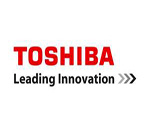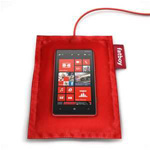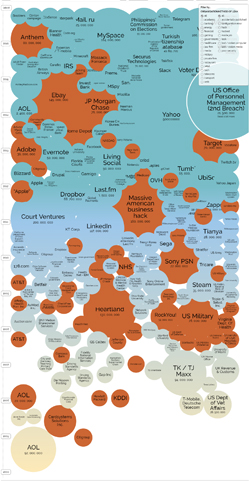Will SoftBank Raise The Stakes?
May 16, 2013 by admin
Filed under Smartphones
Comments Off on Will SoftBank Raise The Stakes?
SoftBank Corp President Masayoshi Son may get a less than enthusiastic reception when he comes to the United States this week to meet Sprint Nextel Corp’s major shareholders, as he tries to drum up support for the Japanese company’s proposed takeover of the No. 3 U.S. wireless service provider.
SoftBank’s billionaire founder, who proposed a $20 billion deal for a 70 percent stake in the U.S. wireless carrier, said on Tuesday that he would discuss the deal with shareholders in a bid to fight off rival Dish Network, a U.S. satellite TV provider, which offered Sprint a $25.5 billion bid.
The executive for the Japanese mobile operator may have a tough time selling the deal, as several shareholders have told Reuters that SoftBank would need to raise its bid in order to win their vote at Sprint’s June 12 shareholder meeting.
Two big Sprint shareholders, Paulson & Co and Omega Advisors, have publicly said the Dish offer looks better than SoftBank’s. Other shareholders said on Tuesday that they would go to meet Son during his trip but they were skeptical about his arguments against Dish.
While Dish’s offer would provide more cash upfront to shareholders, Son has argued that Dish would not be good for the company as it would require Sprint to take on a heavy debt load. He also promises a July 1 close for the deal and warned that Dish regulatory approval may not come until 2014.
Robert Lynch, the director of research for Westchester Capital Management, which owned over 14 million shares in Sprint at the end of December, said that the prospect of a quicker deal close would not be enough to win over his company’s vote.
“We think right now that Dish has a better offer on the table. We think SoftBank’s going to have to improve their offer,” Lynch said, noting that SoftBank’s comments about the prospective debt leverage from a Dish deal were overdone.
“We think the leverage is manageable. We think there are synergies here. While raising the leverage is something we looked at we think its not as big of a obstacle as SoftBank is saying,” Lynch said.
A big Sprint investor who asked not to be named said they were happy to meet with Son while he is in the United States but that they were hoping to convince him to raise his bid.
“If Mr. Son wants to own Sprint he will have to raise his bid,” said the person from a top 25 Sprint shareholder who did not want to be quoted by name ahead of the meeting.
Lenovo To Buy NEC’s Mobile Phone Unit
Japan’s NEC Corp is in negotiations to sell its struggling mobile phone unit to its PC venture partner Lenovo Group Ltd, a source familiar with the discussions said, confirming media reports of the negotiations.
NEC is also in talks with potential domestic buyers, the source said on condition that he wasn’t identified.
NEC has until now said its mobile business is an important part of its overall operations. But after two years of losses the company is shedding assets to bolster profitability.
“Amid the rapidly changing market we are considering a number of ways to bolster the competitiveness of our mobile phone business, but nothing has been decided,” NEC said in a statement through the Tokyo Stock Exchange on Friday in response to the media reports.
Lenovo officials could not be immediately reached for comment.
Japanese phone makers have struggled to gain traction overseas inmarkets dominated by Samsung Electronics Co Ltd and Apple Inc where they are also being challenged by upcoming Chinese makers. In Japan, the two foreign giants are whittling down their share of cell phone sales.
Last October, NEC cut its mobile phone sales target for the year ending March to 4.3 million from a previous estimate of 5 million units. Lenovo, the world’s No.2 maker of PCs, is cranking up overseas expansion in smartphones after solid growth in China.
Japan’s biggest cell phone maker, Sony Corp, is vying with China’s Huawei Technology Co and ZTE Corp to be No.3 in the global smartphone market.
NEC also plans to sell its mobile services subsidiary NEC Mobiling Ltd for as much as $850 million, separate sources told Reuters this month.
Marubeni Corp’s telecommunications unit and TD Mobile, a joint venture between Toyota Tsusho Corp and Denso Corp, are vying for the 51 percent stake, the sources said.
Is Apple Really Security Conscious?
Is Apple proving how clueless it is about security by backing a method of replacing passwords with fingerprint readers?
Just days after a scandal where a South American hospital was staffed by phantom doctors who used silicon fingers of their colleagues to convince administrators’ finger print readers that they were working, Apple has decided that they are the perfect form of security.
Word on the street is that Apple is said to be planning to introduce an iPhone that can be unlocked by the owner’s fingerprint. Speculation about Apple’s plans for fingerprint recognition began last summer when the iPhone maker bought bio-metric security firm AuthenTec for $335 million.
It is believed that the iPhone 5S will have a fingerprint chip under the Home button, to “improve security and usability.” Meanwhile in an engineering journal, two Google security experts outlined plans for an ID ring or smartphone chip that could replace online passwords, which is a lot sexier than fingerprint scanning.
3G And 4G Modems Pose Security Threats
Researchers Nikita Tarakanov and Oleg Kupreev analyzed the security of 3G/4G USB modems obtained from Russian operators for the past several months. Their findings were presented Thursday at the Black Hat Europe 2013 security conference in Amsterdam.
Most 3G/4G modems used in Russia, Europe, and probably elsewhere in the world, are made by Chinese hardware manufacturers Huawei and ZTE, and are branded with the mobile operators’ logos and trademarks, Tarakanov said. Because of this, even if the research was done primarily on Huawei modems from Russian operators, the results should be relevant in other parts of the world as well, he said.
Tarakanov said that they weren’t able to test baseband attacks against the Qualcomm chips found inside the modems because it’s illegal in Russia to operate your own GSM base station if you’re not an intelligence agency or a telecom operator. “We’ll probably have to move to another country for a few months to do it,” he said.
There’s still a lot to investigate in terms of the hardware’s security. For example, the SoC (system on a chip) used in many modems has Bluetooth capability that is disabled from the firmware, but it might be possible to enable it, the researcher said.
For now, the researchers tested the software preloaded on the modems and found multiple ways to attack it or to use it in attacks.
For one, it’s easy to make an image of the USB modem’s file system, modify it and write it on the modem again. There’s a tool available from Huawei to do modem backup and restore, but there are also free tools that support modems from other manufacturers, Tarakanov said.
Malware running on the computer could detect the model and version of the active 3G modem and could write an image with malicious customizations to it using such tools. That modem would then compromise any computer it’s used on.
The researchers also found a possible mass attack vector. Once installed on a computer, the modem application — at least the one from Huawei — checks periodically for updates from a single server, Tarakanov said. Software branded for a specific operator searchers for updates in a server directory specific to that operator.
An attacker who manages to compromise this update server, can launch mass attacks against users from many operators, Tarakanov said. Huawei 3G modems from several different Russian operators used the same server, but there might be other update servers for other countries, he said.
Research in this area is just at the beginning and there’s more to investigate, Tarakanov said. Someone has to do it because many new laptops come with 3G/4G modems directly built in and people should know if they’re a security threat.
LG Buys webOS From HP
Hewlett-Packard has sold some of the rights to its webOS mobile operating system to LG Electronics for use in smart TVs manufactured by the South Korean electronics giant.
LG has agreed to acquire the source code, webOS engineering team and other assets from HP, in a deal announced on Monday. LG will also license HP patents related to webOS and cloud technology, the companies said.
Financial terms of the deal weren’t disclosed.
HP acquired the mobile operating system, along with device maker Palm, in February 2010. HP used the OS on its short-lived TouchPad device, which debuted in mid-2011 then disappeared weeks later.
HP announced a new tablet, the US$169 Slate 7, on Sunday. The Slate 7 will run the Android operating system.
LG will lead the Open webOS and Enyo open-source projects as part of the deal, the company said. HP will retain ownership of all of Palm’s cloud computing assets, including source code, talent, infrastructure and contracts.
HP said it will also continue to support Palm users.
LG will use the technology to expand the Web capabilities of its smart TVs, said Sam Chang, LG vice president and general manager of innovation and Smart TV, in an interview.
LG bought the webOS assets in part for the engineering team, which includes user experience engineers, he said. The webOS engineers who remained at HP — the companies aren’t saying how many there are — are to join LG’s Silicon Valley labs.
Will SSDs Make HD’s Obsolete?
 HD makers can expect to see revenues decline as demand for traditional disk drives falls, according to IHS Isuppli.
HD makers can expect to see revenues decline as demand for traditional disk drives falls, according to IHS Isuppli.
Hard drive manufacturers Seagate, Western Digital and Toshiba have carved up most of the market, lowering warranties and keeping prices high after the Thai floods in 2011 that shuttered several factories. Now IHS Isuppli claims that the good times have come to an end, with industry revenues expected to drop by 11.8 percent in 2013 and 2014 not expected to show signs of improvement.
While Seagate and Western Digital gouged consumers by keeping prices artificially high even after production recovered to pre-flood levels, solid-state disk (SSD) drive makers aggressively brought prices down. Intel has also been pushing SSDs as part of its ultrabook specification and with Windows 8 tablets using SSDs, the long term prospects for hard drive makers are not looking good.
Fang Zhang, analyst for storage systems at IHS Isuppli said, “The HDD industry will face myriad challenges in 2013. Shipments for desktop PCs will slip this year, while notebook sales are under pressure as consumers continue to favour smartphones and tablets. The declining price of SSDs also will allow them to take away some share from conventional HDDs. However, HDDs will continue to be the dominant form of storage this year, especially as demand for ultrabooks picks up and hard drives remain essential in business computing.”
IHS Isuppli said Western Digital could overtake Seagate to become the market share leader by the end of 2013, and said that hard drives will see greater use in the enterprise market in cloud and big data use cases.
AP Goes With Twitter
January 14, 2013 by admin
Filed under Around The Net
Comments Off on AP Goes With Twitter
The Associated Press began using its official Twitter account as an advertising platform on Monday, as the news organization looks for new ways to generate revenue.
Samsung Electronics Co Ltd was the first sponsor on the @ap account for breaking news, which is followed by 1.5 million Twitter users. The South Korean electronics maker’s initial “SPONSORED TWEET” promoted its events at the 2013 Consumer Electronics Show in Las Vegas this week.
AP did not disclose financial details of the arrangement.
Twitter, which sells ads directly to make money from the social media’s monthly base of 200 million users, will not receive any proceeds from the AP-Samsung deal.
The AP called the initiative part of a new business strategy and stressed that sponsored tweets will clearly be labeled to differentiate them from news tweets.
The ads provide AP a new income source as news organizations from newspapers to television face severe revenue declines in the face of high production costs.
While the AP was founded in 1846 by U.S. newspapers as a breaking news conduit, only 22 percent of its revenue comes from member fees. Photo licensing, advertising on its news application AP Mobile and YouTube channel are other revenue streams.
Was The Prize Stock For 2012?
 If you wanted to know the IT company which was a rotten investment this year, you might be thinking Facebook, HP or RIM.
If you wanted to know the IT company which was a rotten investment this year, you might be thinking Facebook, HP or RIM.
However according to Business Insider is starting to look like the so-called industry leader, Apple might have caused its investors the biggest headaches. More money has been lost in the past three months in Apple stock than has ever been lost in the tech disasters known as Hewlett-Packard and Research In Motion combined.
HP’s stock price peaked above $50 a few years ago, and now it’s trading at $14 and RIM peaked above $140 a few years ago, and it’s trading for $11. However Jobs Mob’s share price peaked above $700 three months ago and is now trading just above $500. This means that on a percentage basis, therefore, Apple’s stock is down much less than either Hewlett-Packard RIM but has cost shareholders a lot more money.
When HP investors have lost about $100 billion since the 2000 peak and RIM has lost $65 billion since the 2000 peak. Apple has cost its shareholders value in three months. What is more amusing is that about four months ago, I was lectured by an Apple fanboy who told me that the company is going to be worth a trillion dollars by the end of the year and he just invested more than $100,000 in the company. Looks like he would have been better off putting it on a horse.
Toshiba To Offer A 20-megapixel Image Chip
Comments Off on Toshiba To Offer A 20-megapixel Image Chip
 Toshiba is gearing up for to offer a 20-megapixel image sensor for digital cameras that it says will be the highest resolution of its kind.
Toshiba is gearing up for to offer a 20-megapixel image sensor for digital cameras that it says will be the highest resolution of its kind.
The Tokyo-based firm said the new chips will be able to support capturing 30 frames per second at full resolution. They will also be able to shoot video at 60 frames per second at 1080P or 100 frames at 720P.
Toshiba said it will begin shipping samples of the new CMOS chips in January, with mass production to begin in August of 300,000 units monthly. Toshiba is best known in components for its NAND flash memory, which it develops with partner SanDisk, but is also a major manufacturer of LSI and other semiconductors.
Digital point-and-shoot cameras are steadily falling in price, squeezed between brutal competition among manufacturers and the increasing threat of smartphones and mobile devices. While the number of pixels a camera can capture is not always a direct measure of the overall quality of its images, it is a key selling point to consumers.
The image resolution of top-end smartphones now often meets or exceed that of digital cameras. The Nokia 808 PureView launched earlier this year has a 41-megapixel image sensor.
The Japanese manufacturer said it has increased the amount of information pixels in the new chip can store compared to its previous generation of CMOS, producing better overall images. It has also reduces the size of pixels – the new 20-megapixel version has individual pixels that measure 1.2 micrometers, down from 1.34 micrometers in its 16-megapixel product.
Toyota Goes Wireless Charging
January 2, 2013 by admin
Filed under Around The Net
Comments Off on Toyota Goes Wireless Charging
 Toyota is taking the smartphone boom quite seriously and the car-maker hopes to offer the first wireless charging systems in select models as early as next year.
Toyota is taking the smartphone boom quite seriously and the car-maker hopes to offer the first wireless charging systems in select models as early as next year.
Toyota’s wireless system will be compatible with the Qi standard and it will be introduced in the new Avalon sedan next year. Of course, it will be optional and it will be part of Toyota’s $1,950 “technology package” which includes other geeky goodies as well.
According to the BBC, Chrysler is also planning to offer a similar system in the Dodge Dart. Other car-makers will no doubt offer wireless charging functionality sooner rather than later.
The number of Qi compatible phones is limited for the time being. Just 34 phones support it, including the Lumia 920, Nexus 4 and HTC Windows Phone 8X. However, some very popular devices like Apple’s iPhone and Sammy’s Galaxy S series phones don’t support wireless charging just yet.








 Sign up for our Technology Newsletter
Sign up for our Technology Newsletter